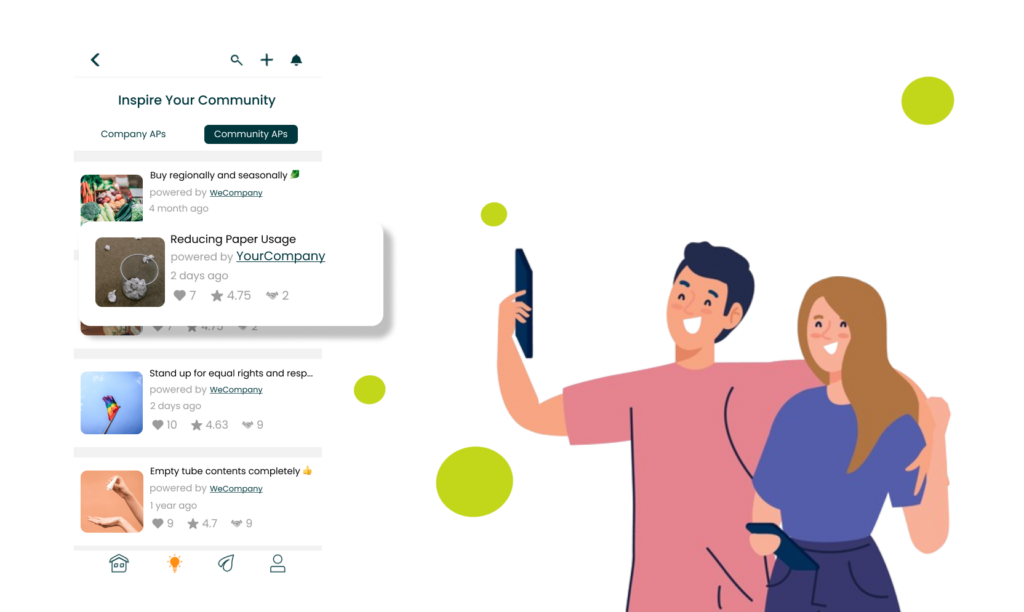Sustainability has become a cornerstone of modern business strategy, not only as a moral imperative but also as a driver of long-term growth and a critical factor in attracting and retaining top talent. However, despite its growing importance, sustainability initiatives often fail to resonate with all employees, creating a divide between those passionate about the cause and those who find it irrelevant or burdensome. This diversity of perspectives presents a major challenge for companies, requiring a thoughtful and flexible approach to sensitizing employees in ways that resonate best with each individual. True sustainable transformation begins from within, and success depends on actively involving everyone. A united, engaged workforce amplifies the company’s authenticity and impact in sustainability, with employees serving as powerful influencers and brand ambassadors. This underscores the vital role of internal communication and employee engagement in embedding sustainability into the company’s core, ensuring its success as a strategic priority.
The Pitfalls of Traditional Sustainability Initiatives
One common mistake is relying on a one-size-fits-all approach. For example, companies might launch sustainability programs that are too rigid or overwhelming, requiring significant time or effort from employees. These initiatives tend to attract only the most enthusiastic individuals, while others may feel pressured or disinterested, leading to disengagement.
Another challenge lies in communication. Overly technical jargon or guilt-driven messaging can deter employees who might otherwise be open to participating in sustainability efforts. The key is to strike a balance that empowers rather than overwhelms.
Building an Inclusive Framework for Sustainability Engagement
To ensure the success of sustainability initiatives, companies must create an inclusive framework where every employee can contribute within their comfort zone. Here’s how:
1. Understand Your Workforce’s Pulse
To drive meaningful engagement, it’s essential to implement methods, tools, and processes that continuously gauge the mood and sentiments of your employees. Rather than relying on occasional surveys or special questionnaires, collect feedback seamlessly during the regular course of work. This ongoing approach provides real-time insights into employees’ interests, concerns, and attitudes, enabling you to make data-driven adjustments and tailor initiatives to meet the diverse needs of your workforce.
2. Diversify Engagement Opportunities
Not everyone will want to join a green committee or spearhead energy-saving projects, and that’s okay. Offer a variety of ways for employees to get involved, such as:
- Micro-actions: Encourage small, everyday actions like reducing paper usage or participating in office recycling programs.

- Volunteering Opportunities: Organize events and initiatives where employees can participate occasionally without long-term commitments.
- Collaborative Spaces: Create environments that foster joint action and idea-sharing. These spaces should be open and accessible, allowing employees to contribute as much or as little as they like.
- Impact Visualization: Regularly showcase the collective impact of the organization’s sustainability efforts. Seeing tangible results motivates employees, reinforcing their contributions and demonstrating the power of collective action.
- Tangible Actions: Communicate the company’s sustainability actions in a clear, relatable and easily understandable way. Use simple language, visual aids, and real-life examples to ensure that all employees feel connected to the company’s mission.
3. Gamify the Experience
Introducing elements of gamification can make sustainability fun and engaging. Create friendly competitions between teams to see who can save the most energy or reduce waste. Reward participation with tangible incentives, such as extra time off or public recognition.
4. Leverage Internal Champions
Identify and empower sustainability champions across different departments. These individuals can act as role models, encouraging their peers to take part. Ensure that these champions come from diverse backgrounds to avoid the perception that sustainability is only for a select few.
5. Communicate Effectively
Tailor your messaging to resonate with different audiences. Instead of focusing solely on environmental benefits, highlight how sustainability aligns with business goals, such as cost savings, social responsibility, or market attractiveness. Share progress in real time and celebrate milestones to keep the momentum and enthusiasm going.
Conclusion: Sustainability as a Competitive Advantage
In a market environment where sustainability and social responsibility have become a crucial factor for all stakeholders, a robust sustainability strategy is more than a nice-to-have; it’s a key differentiator. By engaging employees at all levels and creating an inclusive framework, companies can drive meaningful change while fostering a culture of collaboration and purpose. Ultimately, sustainability is a shared journey, and when everyone feels empowered to contribute, the company as a whole stands to benefit—not just in environmental impact, but in attracting and retaining the best talent for the future.
Related Posts
Related Posts
In the sustainability discourse, most of us have already heard of greenwashing — the practice of exaggerating or fabricating environmental credentials to …
The last few decades have seen significant shifts in marketing strategies, driven by changes in consumer behavior, technology, and global trends. Recently, …
When it comes to change, many organizations still think big: bold strategies, sweeping campaigns, ambitious targets. While these are important, research from …



